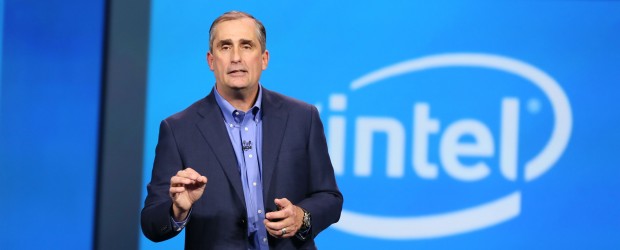Intel CEO Brian Krzanich addressed attendees Tuesday night for his second keynote in a row at CES to show Intel’s vision of the future. This year, the company broke down their message into three segments, namely “Computing Unleashed,” Intelligence Everywhere” and “The Wearable Revolution” but, as with last year, addressed an issue it thought was relevant to the tech community.
Here are the major takeaways.
Bringing computing to the third dimension

Intel RealSense 3D technology allows for touchless gesture and voice control of the computer
According to Intel, the last big moment in technology was exactly 20 years ago, when the Pentium Pro processor, commercial web browsers, world wide web, search engines, e-commerce and USB began to emerge. Yet interaction with computing over the past two decades has so far been limited to a 2D realm.
This is about to change with the introduction of RealSense, a small integrated 3D camera technology that combines the capabilities of Lytro’s focus-after photography functions with Microsoft Kinect’s 3D motion tracking and voice control capabilities, and even adds the ability to scan in a 3D object.
The first major application of this, Krzanich said, would be to “change how we experience computing.” The Intel executive showed off not just gesture-based and voice-based controls on a laptop but also an all-in-one PC that combined 3D finger tracking with augmented reality to produce the optical illusion of hologram controls.

HP Sprout uses RealSense 3D camera technology to capture objects in virtual 3D
In partnership with HP, Intel also demoed “Sprout,” which uses the RealSense 3D camera to scan and input 3D objects into a digital environment.
While he was on stage, Dion Weisler, executive vice president of HP’s printer and personal system’s business even announced that Intel’s Core i7 processors would be used in his company’s new 3D printing entry named the Multi Jet Fusion.
Meanwhile, other OEM’s lining up to get their hands on RealSense technology include Acer, Asus, Dell Fujitsu, Lenovo and NEC.
Technology everywhere

Intel applied RealSense 3D camera facial recognition and proximity sensors to enable authentication for a smart home entry
RealSense has applications outside of gesture-based PC controls, however. Intel also applied the technology to smart homes that used a combination of 3D facial recognition and proximity censors to authenticate entry and applied it to drones to give them environment awareness and collision avoidance.
This technology was even taken up by iRobot, the makers of the Roomba vacuum cleaner who are exploring adding environmental awareness to other types of robotics.
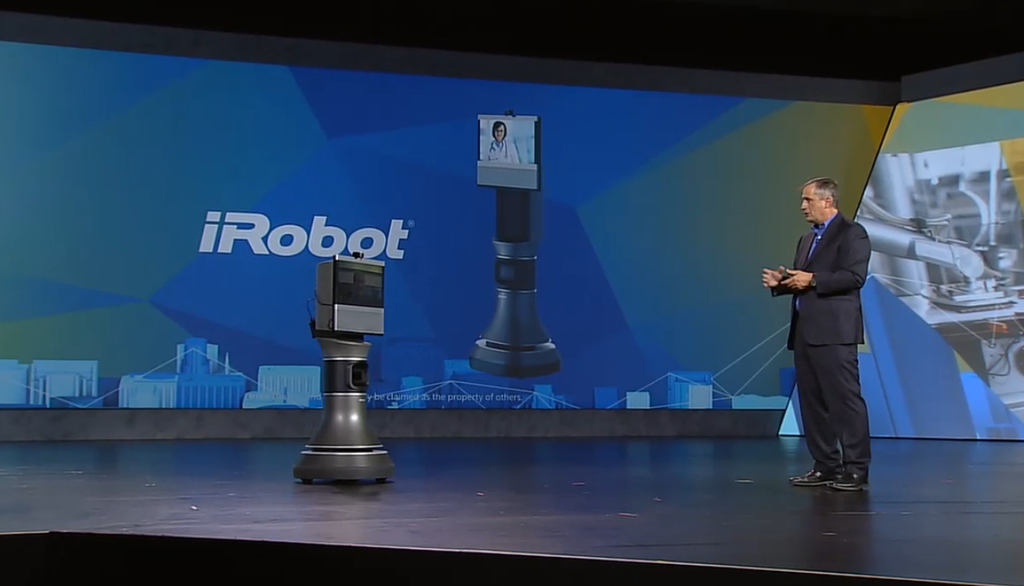
3D spacial awareness applied to the Ava 500, a “video collaboration robot.” But does it vacuum your floors?
Lastly, while it does not integrate RealSense, Intel even demoed a table that is capable of charging devices wirelessly and announced pilots in partnership with Hilton, Jaguar, Land Rover, San Francisco International Airport and Marriott hotels to pilot these wireless charging tables.
A purpose to wearables
Of course, technology wouldn’t truly be everywhere if it weren’t on your body. What was novel, perhaps, with Intel’s wearables showing this year is that it brought purpose to the technology, namely allowing people to do what would otherwise be impossible.
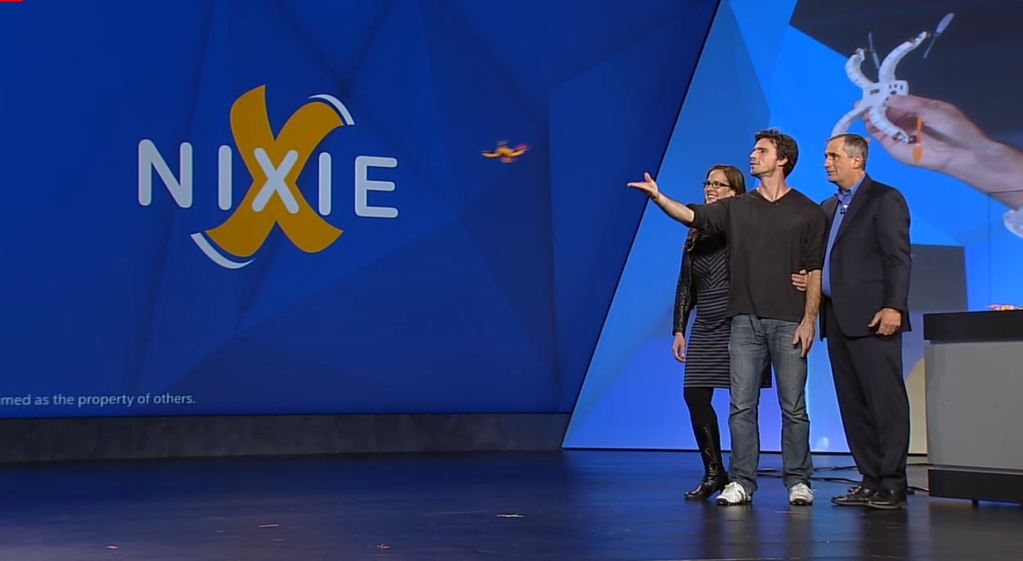
Winners of Intel’s 2014 Make It Wearable challenge, Nixie, demo their wearable drone camera live on stage by taking a selfie of the presenters.
To demonstrate this, Krzanich brought on Nixie, a startup that won Intel’s 2014 “Make it Wearable” challenge with their drone camera that can be worn as a bracelet. It combines the spontaneity of mobile photography with the positioning flexibility of a drone.
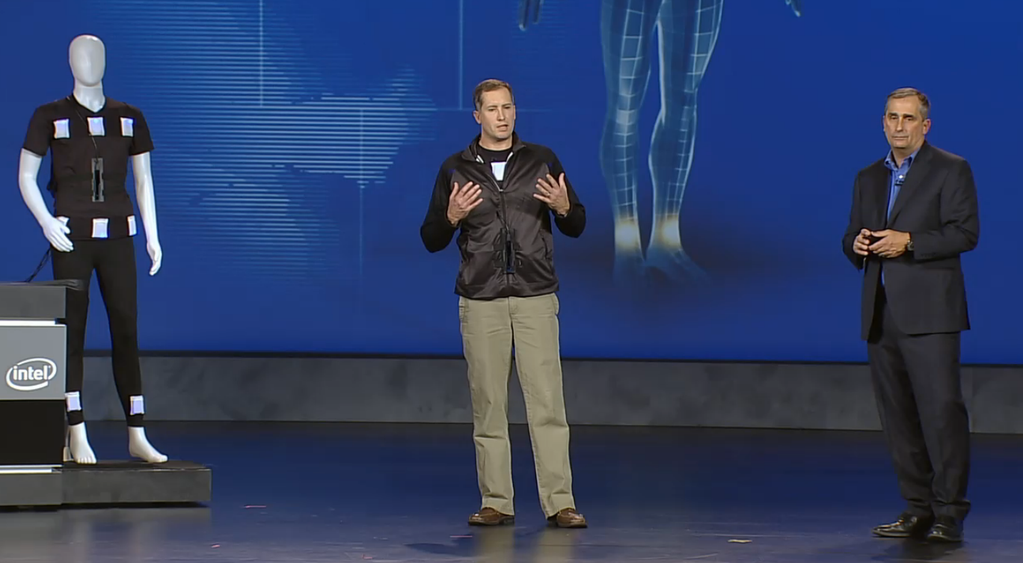
Intel engineer Darryl Adams, who is visually impaired, shows off a RealSense-enabled jacket that helps give him better spacial awareness through gentle vibrations and allows him to be “in the moment.”
Another wearable that Intel demoed used RealSense cameras and gentle vibrations in a jacket to help the visually impaired navigate their environment. The company will be making the technology publicly available later this year.
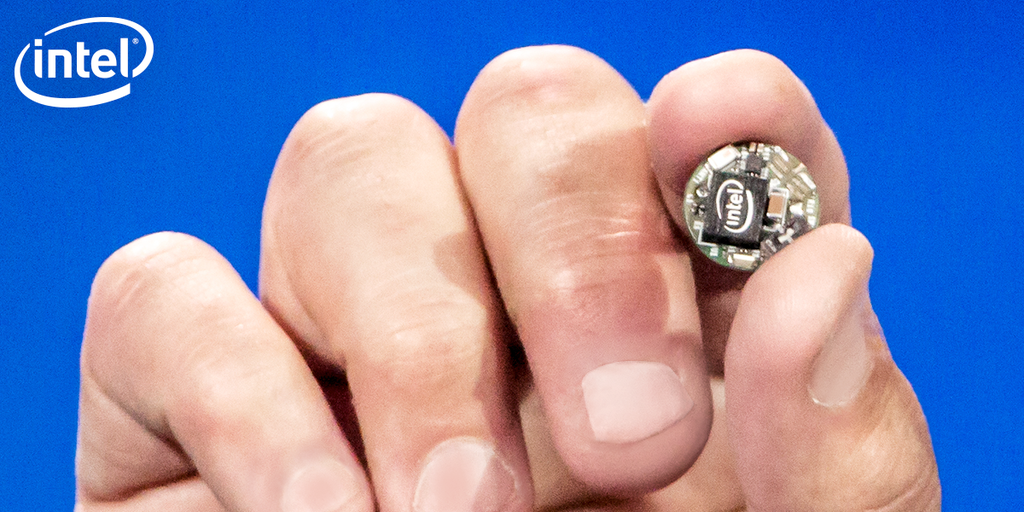
Intel’s new “Curie” chip is a computer the size of a button.
But it woudn’t be Intel without computer chips. The same company that brought us the SD-card-sized Edison chip at last year’s CES unveiled the Curie, which allows for compute, motion sensing, Bluetooth low energy functions and battery charging capabilities all at the size of a button.
With this, the company hopes to push wearable technology even further by removing form factor restrictions.
And a surprise: Diversity

Intel affirming its commitment to diversity in the technology workforce on the CES 2015 stage
Even considering that Intel left off last year’s keynote address with a discussion on conflict-free minerals and made a commitment to reduce its reliance of them, it may have come as a surprise to many that the chip maker brought “inclusion” under the spotlight at CES 2015.
In his conclusion, Krzanich took a moment to address the issue of representation in the tech and gaming industries, and even called out the controversial “Gamergate”, which involved threats and harassment towards women in the gaming community, as a factor in the company’s decision in committing $300 million over the next five years to bringing women and minorities into the tech and gaming workforce through a new “Diversity in Technology Initiative.”
To show how serious Intel is, Krzanich committed to tying the pay of leaders to progress, which will be reported with “full transparency” on a regular basis.
“This isn’t just business, this is the right thing to do,” Krzanich said.


